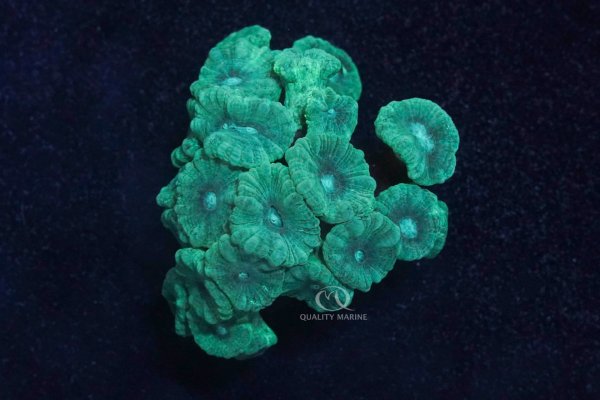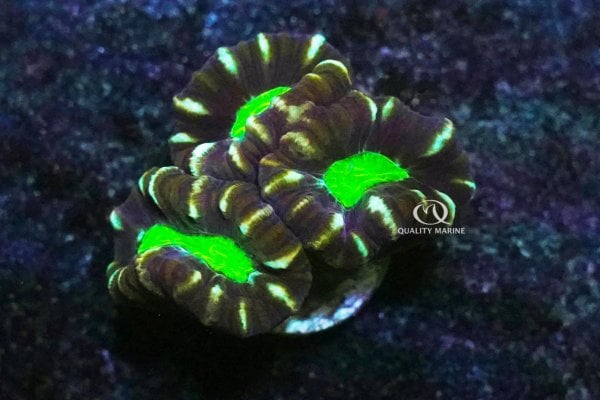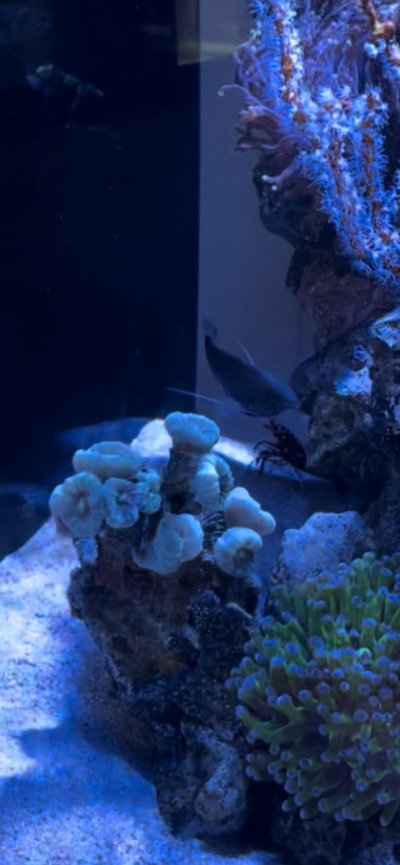The Candy Cane Coral, (Caulastrea furcata) goes by another common name as well – the trumpet coral. The scientific name of the genus Caluastrea is based in Latin, meaning stalked star. They are members of the family Merulinidae which includes a few other easily recognizable names such as: Favites, Goniastrea, Oulophyllia, Pectinia, Platygyra, and Trachyphyllia. This LPS (large polyp stony) coral easily shows why it earned this scientific name. The Candy Cane coral grows from a branching skeleton which continuously splits forming more and more “heads” or polyps at the tips. In the wild, and in aquariums if given enough time, these will form large colonies that almost appear as if they are one large, connected piece of tissue. They are however all individually separate polyps only connected by the branching coral skeleton underneath. There are several different variations within Caluastrea – the most common being a reddish-brown crown with a neon green interior around the mouth of the polyp. Another popular variety is entirely neon green around the entire crown. Click here to learn more

These corals aren’t the easiest to feed, despite their hardiness. When the circumstances are right they will have small feeder tentacles at the center of each polyp surrounding their mouth. If you ever see this, reduce flow and target feed the polyps with a fine plankton type mixture. Larger polyps can maybe be offered finely chopped meaty foods like prawns turned into a paste – but don’t push it as anything too big will take too long for them to eat and might encourage fish or invertebrates to come and pick at those polyps – not only robbing them of a meal, but also potentially harming them in the process. As with almost everything in the hobby, take time and observe.


These corals aren’t the easiest to feed, despite their hardiness. When the circumstances are right they will have small feeder tentacles at the center of each polyp surrounding their mouth. If you ever see this, reduce flow and target feed the polyps with a fine plankton type mixture. Larger polyps can maybe be offered finely chopped meaty foods like prawns turned into a paste – but don’t push it as anything too big will take too long for them to eat and might encourage fish or invertebrates to come and pick at those polyps – not only robbing them of a meal, but also potentially harming them in the process. As with almost everything in the hobby, take time and observe.














